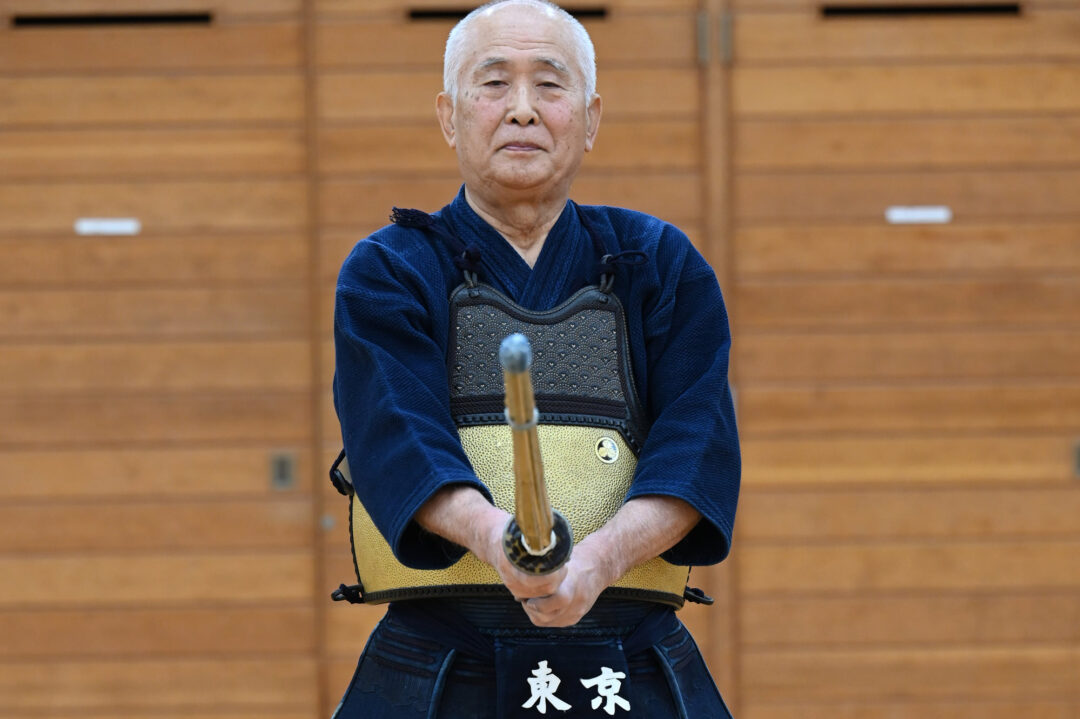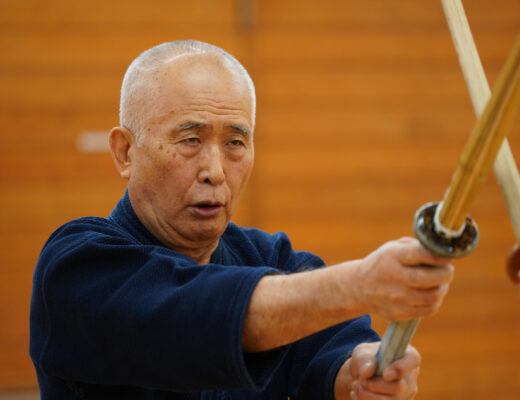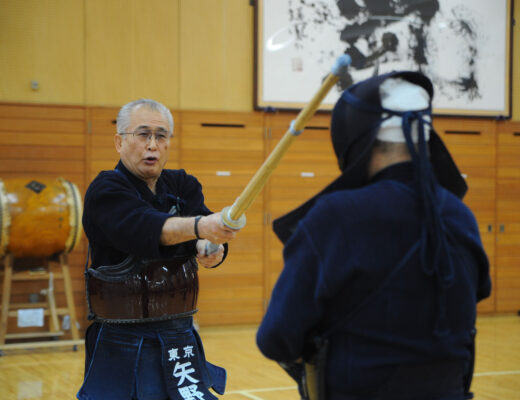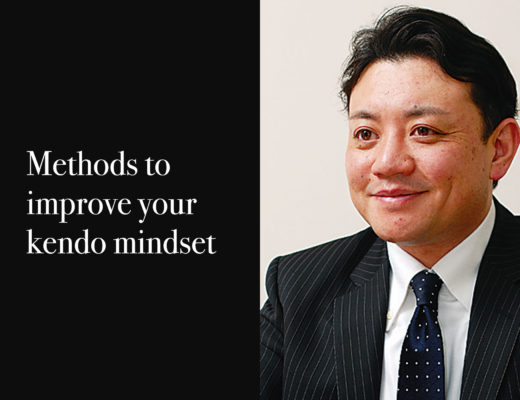2022.9 KENDOJIDAI
Yano Hiroshi
Born in Shizuoka Prefecture in 1941. He attended Sagara High School and then enrolled in Kokushikan University, where he worked as a research assistant after graduation. In 1986, he became a professor at the same university and retired in 2011. His notable achievements include 2nd place in the World Kendo Championship, 3rd place in the Meiji Mura Kendo Tournament, 3rd place in the Okinawa Prefectural Budokan Inauguration National Kendo 8th Dan Tournament, and 1st place in the National Teachers’ Kendo Tournament. Currently, he is an honorary professor at Kokushikan University and the head instructor of the Kendo Club.
Meeting with my Mentor, Takai Toshio
In April of 1956, I enrolled in Sagara High School in Shizuoka Prefecture. It was here that I had the opportunity to receive guidance from Takai Toshio, who would become my mentor and create a connection that would span over half a century of involvement with Kokushikan University.
Every day, we would have morning Keiko before classes, and through rigorous training three times a day, my skills improved significantly, and I was able to achieve 2nd dan while still in high school. At that time, the goal of the Kendo Club was to participate in the Tokai Four Prefectures Kendo Tournament (Aichi, Mie, Gifu, Shizuoka). I finally achieved victory in the qualifying tournament, the Shizuoka Prefectural Sports Festival Kendo Tournament, and the dream of participating in the major tournament came true. It was the greatest joy and a cherished memory throughout my high school life.
As graduation approached, I had the opportunity to participate in a summer Kendo training camp at a university other than Kokushikan through my connection with the National Athletic Meet training camp. Both the university and I had almost decided on my enrollment there. However, it was through a single remark from Takai Sensei, “If you’re serious about Kendo, go to Kokushikan,” that I first learned about the existence of Kokushikan University.
To directly experience Kokushikan University, my father went to Tokyo with Takai Sensei. Guided by Takai Sensei, we visited the homes of Saimura Goro Sensei (Takai Sensei’s mentor), Ono Soichiro Sensei (the founding head of the Kendo Club at Kokushikan University), and Shibata Tokujiro Sensei (the President of Kokushikan University) in person. As soon as we returned home, my father said, “You should go to Kokushikan University,” and that’s when I decided to change my course to Kokushikan University. My father had served as a local town council member for many years and was very progressive and passionate about education. Without his words, “Go to Kokushikan University,” I wouldn’t be who I am today.
Kokushikan University, Room 7 of the Shoki Dormitory
Together with my father, I traveled to Tokyo and immediately visited the home of Ono Soichiro Sensei to introduce ourselves. Being ignorant country folks, both my father and I brought our Kendo uniforms, Hakama, and two Shinai, assuming that we could borrow Kendo equipment from the university. However, we were surprised to learn from Ono Sensei that we needed our own gear for Keiko and that we would require several Shinai. On the spot, my father ordered a complete set of Kendo equipment and six Shinai through Ono Sensei.
After parting ways with my father, I headed to the university alone, not knowing left from right, so to speak. Upon arriving at the university, I completed the dormitory registration process and found myself in an old, two-story building arranged in a horseshoe shape, reminiscent of traditional row houses. Inside the building, there were bunk beds tightly arranged, which was the Shoki Dormitory, while the Jishu Dormitory consisted of rooms roughly the size of ten tatami mats.
I moved into Room 7 of the Shoki Dormitory, and it was from here that my journey as a university student began. Starting with morning Keiko, followed by breakfast, classes, afternoon practice (starting around 3 o’clock), dinner, bath, and roll call, I remember those days as a constant state of tension, always being under the watchful eye of the seniors. Looking back now, I fondly recall those days.
After a while, a welcoming tournament for new students (which also served as a selection for the freshman team) was held. Since my equipment was not yet ready, I was observing from a corner of the Dojo. At that moment, a senior named Taguchi Yasuo, who was one year ahead of me, approached and said, “I’ll lend you my equipment so you can practice.” Thanks to his kind offer, I was able to participate. I will never forget the excitement I felt at that time. Fortunately, I was able to win the tournament, and this became the starting point for the seniors to remember my name and greet me. It was a moment when I firmly resolved to give my all in this environment, and I am truly grateful to Taguchi Senpai for his kindness, reflecting back on those days.
First Head of the Kendo Club, Ono Soichiro Sensei
Ono Sensei was the first head of the Kokushikan University Kendo Club and my mentor who guided me to join the club along with the university’s founder. He was born in Tamatsukuri Village near Matsue City in Shimane Prefecture in February of 1901. At Matsue Junior High School, he received guidance in kendo from Ashida Choichi Sensei. In April of 1922, he enrolled in the Physical Education Department (Kendo specialization) of Tokyo Higher Normal School and learned from teachers like Takano Sasaburo. Before the war, he served as a teacher at Yatsushiro Junior High School and Sugamo Junior High School. After the war, in 1956, he was assigned to Kokushikan University and saw more than 3,000 students graduate under his guidance.
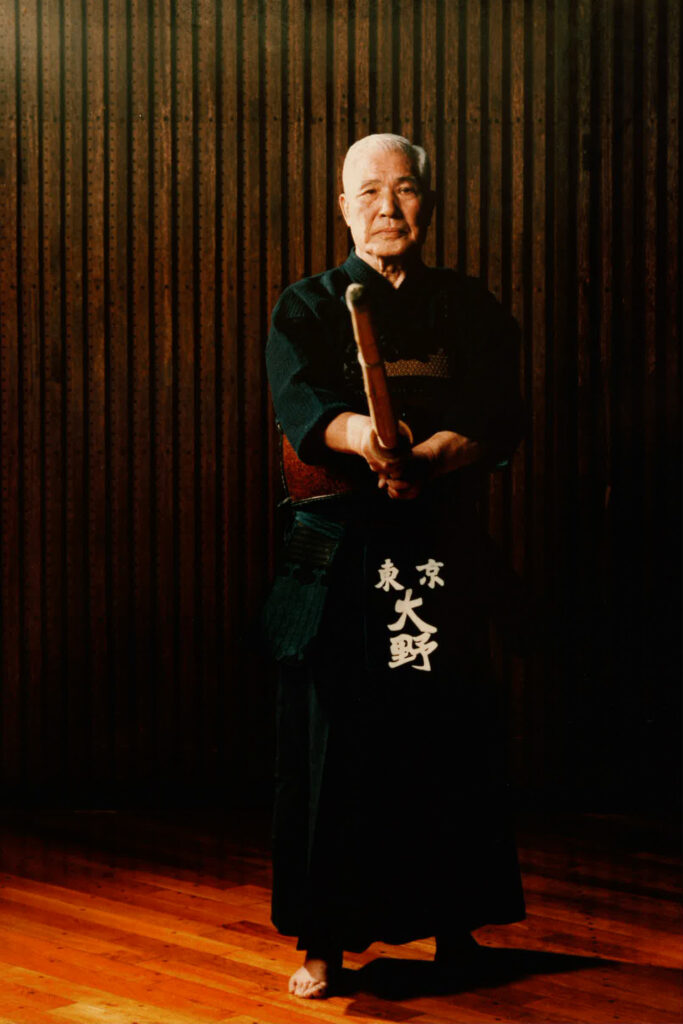
I entered the university in 1959, during Ono Sensei’s fourth year at the university. The Kendo Club was entering a period of full-fledged activities, and that year, we achieved our first victory at the 5th Kanto Student Kendo Freshman Tournament. It was a time when the university, coaching staff, and club members all came together with a dream of winning the national title, and we trained with even greater determination. Ono Sensei commuted to the university on his beloved bicycle and had remarkable leg strength, effortlessly pedaling up steep hills along the way. He continued this practice until his later years.
The university’s Dojo at the time of my enrollment had a raised Tatami area about 50 centimeters higher in the center front of the building. Behind it was a large mirror, and on the left side, there was a taiko drum. The elongated Dojo had Ono Sensei and Samura Sensei seated at the center of the upper area, with other teachers sitting on both sides. The students were arranged in rows, with the fourth-year students in the front row and the first-year students in the back row, forming a unified structure.
During Keiko, we would line up in groups to the senior students, and synchronize with Ono Sensei’s taiko drum we would perform Kirikaeshi, Uchikomi, and Kakarigeiko. When it came to Jigeiko, Ono Sensei would step in, and the total Keiko time would be about one hour. Afternoon Keiko followed a similar routine, including Kirikaeshi, Uchikomi (with technique instruction), Kakarigeiko and Jigeiko lasting for approximately two hours. About a month before a competition, we would also incorporate Shiai Keiko. These sessions took place either in the afternoon or after regular Keiko, and after Shiai Keiko, we would be completely exhausted.
Kendo at Kokushikan University emphasized creating a sense of intimidation and fear in the opponent. It valued the use of Tsuki, foot sweeps, and aggressive techniques that could, if you would describe it negatively, potentially cause pain to the opponent. Personally, I always considered falling down as the biggest shame and embarrassment, rather than getting struck or losing in Shiai.
Morning Keiko, which was generally rare at the time, had been conducted since my vocational school days. It played a crucial role in establishing the foundation of the Kokushikan University Kendo Club and contributed greatly to our progress. The Sensei worked hard to build a strong Kendo club that could win in Shiai. They encouraged us to train with a wide range of people, not just within the university, and actively organized Keiko sessions at places like Waseda University, Keio University, and the University of Education. They always emphasized experiencing a sense of tension and seriousness during Keiko. At that time, university Keiko sessions took place on Saturdays and Sundays, with both days being off. During those two days, under the guidance of the Sensei, we frequently had morning Keiko at Noma Dojo in Gokokuji and then moved to the Imperial Police (Saineikan) Dojo for the second part of Keiko, starting from 10 o’clock.
Particularly after graduating from university and becoming an assistant, I continued to attend Keiko without fail for a while. I will never forget how delicious the tempura bowl at the restaurant in Ikebukuro was when I stopped by on my way back. By the time I reached Umegaoka Station, I was completely exhausted, both physically and mentally, weighed down by the heaviness of my Bogu, and I felt like collapsing right there.
Big techniques lead to attaining small techniques
The rest of this article is only available for Kendo Jidai International subscribers!

